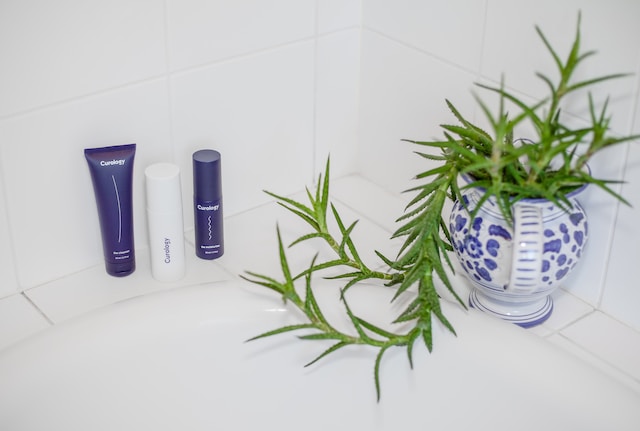Maintaining a healthy and clear complexion is essential for healthy skin. One of the fundamental steps in any skincare routine is cleansing. Cleansing your face removes impurities, excess oil, and makeup residue, leaving your skin clean and fresh. However, with a vast array of cleansers and techniques available, it can be challenging to determine the best way to cleanse your face. In this article, we will discuss various methods and tips for effective facial cleansing.
Understanding Your Skin Type
Before delving into the details of facial cleansing, it is essential to identify your skin type. Knowing your skin type will help you choose the right products and techniques to cleanse your face effectively. Generally, there are four skin types: oily, dry, combination, and sensitive.
Oily Skin
People with oily skin tend to produce more sebum, resulting in shiny skin with enlarged pores. They are more prone to acne and breakouts.
Dry Skin
Dry skin is characterized by a lack of natural oils, which can cause flakiness, tightness, and itching.
Combination Skin
Combination skin is a mix of both oily and dry skin. Typically, the T-zone (forehead, nose, and chin) is oily, while the cheeks are dry.
Sensitive Skin
Sensitive skin is easily irritated and prone to redness, itching, and rashes. It is crucial to choose gentle, non-irritating products for sensitive skin.
Choosing the Right Cleanser
Once you know your skin type, you can select the right cleanser. Here are some of the most common types of facial cleansers:
Foaming Cleanser
Foaming cleansers are ideal for oily skin types as they remove excess oil and impurities effectively. They come in a gel or liquid form and produce a foam when mixed with water.
Cream Cleanser
Cream cleansers are perfect for people with dry or sensitive skin as they are gentle and hydrating. They often contain nourishing ingredients like ceramides and hyaluronic acid.
Micellar Water
Micellar water is a gentle, non-rinse cleanser that is ideal for all skin types. It contains tiny oil molecules that attract dirt and makeup, leaving your skin clean and refreshed.
Oil Cleanser
Oil cleansers are ideal for removing makeup and impurities, especially for people with dry skin. They dissolve makeup, dirt, and oil without stripping away the skin’s natural oils.
Cleansing Techniques
Now that you have chosen the right cleanser let’s move on to the techniques of facial cleansing.
Step 1: Pre-cleanse
Pre-cleansing is a crucial step, especially if you wear makeup. Use a makeup remover or micellar water to remove your makeup before cleansing your face. This step ensures that your skin is free of any makeup residue.
Step 2: Wet your face
Wet your face with lukewarm water to open up your pores. Hot water can damage your skin, and cold water does not remove dirt and oil effectively.
Step 3: Apply the Cleanser
Take a pea-sized amount of cleanser and apply it to your face. Massage it gently in a circular motion, focusing on the T-zone and areas where makeup is applied.
Step 4: Rinse
Rinse your face with lukewarm water to remove the cleanser. Ensure that you rinse thoroughly, leaving no residue behind.
Step 5: Pat Dry
Gently pat your face dry with a clean towel. Rubbing your face can cause irritation and damage your skin.
Tips for Effective Facial Cleansing
Here are some additional tips to make the most of your facial cleansing routine:
Do not Over-cleanse
Over-cleansing can strip away the skin’s natural oils and cause dryness, irritation, and breakouts. Stick to cleansing your face twice a day, morning and night.
Use Lukewarm Water
Hot water can damage the skin, and cold water does not remove dirt and oil effectively. Use lukewarm water to cleanse your face.
Be Gentle
Avoid rubbing your face vigorously while cleansing. Use gentle circular motions to massage the cleanser into your skin.
Cleanse for the Appropriate Time
Cleansing your face for too long or too short can be ineffective. Typically, cleansing your face for 30-60 seconds is sufficient.
Do not Forget to Cleanse your Neck
Do not neglect your neck while cleansing your face. Your neck is prone to breakouts and requires cleansing too.
FAQs
Q1. Can I use bar soap to cleanse my face?
No, bar soaps are usually harsh and contain high pH levels, which can strip away the skin’s natural oils and cause dryness and irritation. Use a gentle, pH-balanced facial cleanser instead.
Q2. How often should I exfoliate my skin?
Exfoliating your skin once or twice a week is sufficient. Over-exfoliating can cause irritation, dryness, and breakouts.
Q3. Is it necessary to use a toner after cleansing?
Toners help to restore the skin’s natural pH levels and remove any residual dirt or impurities. However, it is not necessary to use a toner after cleansing.
Q4. Can I use hot water to cleanse my face?
Hot water can damage the skin’s barrier and cause dryness, redness, and irritation. Use lukewarm water to cleanse your face.
Q5. What is double cleansing, and is it necessary?
Double cleansing involves using an oil-based cleanser followed by a water-based cleanser to remove makeup, dirt, and oil effectively. It is not necessary for everyone but can be beneficial for people who wear heavy makeup or have oily skin.
Conclusion
Cleansing your face is an essential step in any skincare routine. Choosing the right cleanser and technique can help maintain healthy, clear skin. Remember to identify your skin type, choose the right cleanser, and follow the appropriate cleansing technique. By incorporating these tips into your skincare routine, you can achieve a healthy, glowing complexion.
Source: https://www.ohhowcharming.com/












